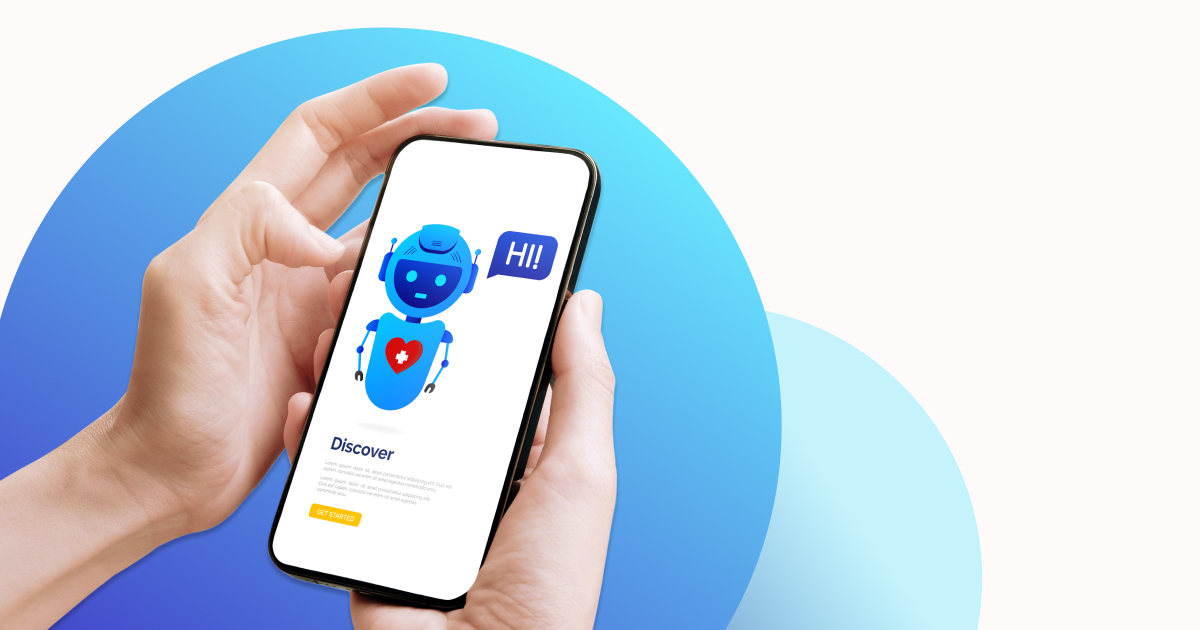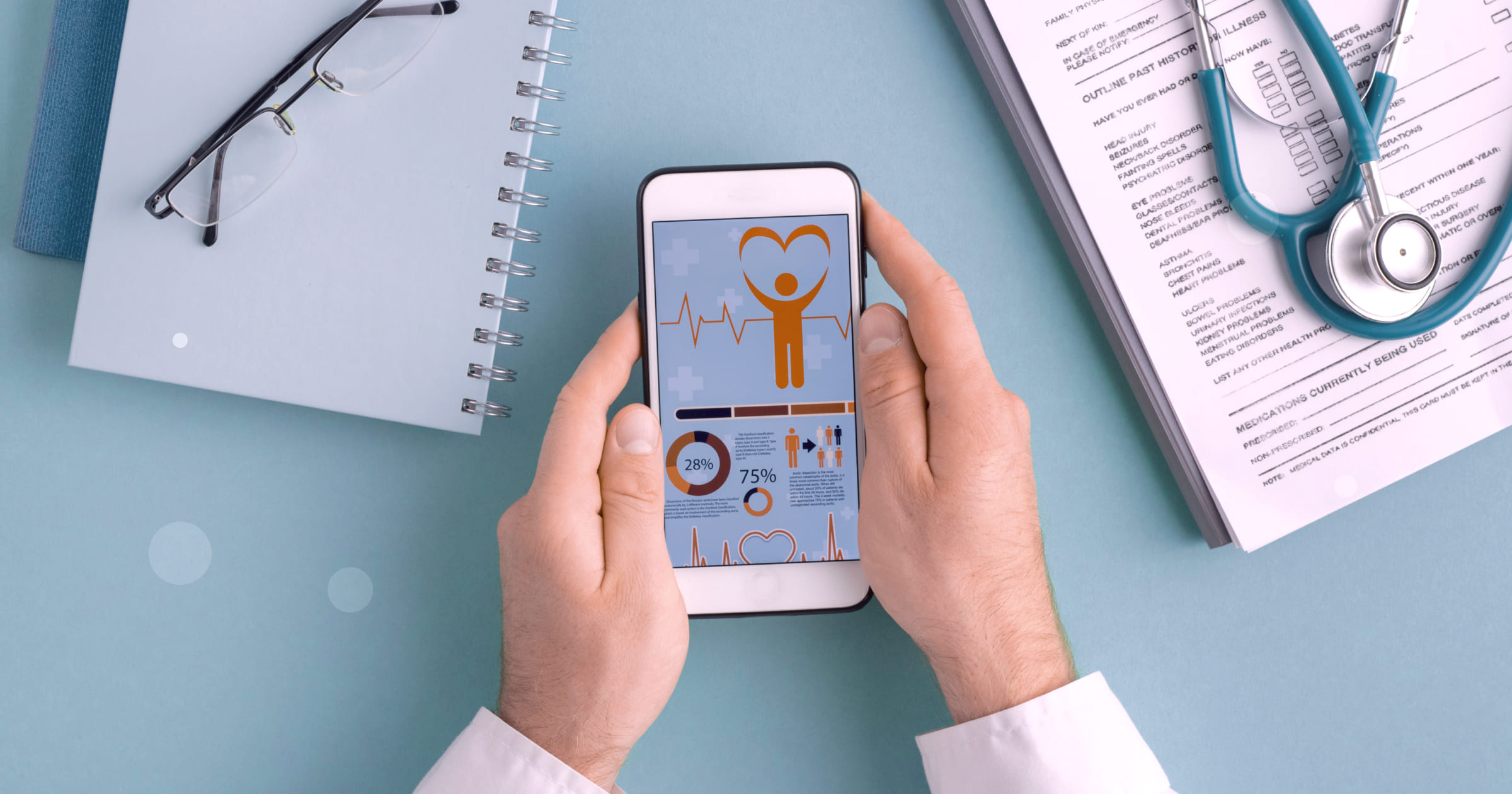Millions of people worldwide turn to matching apps for purposes beyond dating. These apps facilitate connections based on various criteria, interests, or goals. The market for healthcare and social care apps is growing, catering to diverse needs such as finding support groups or activity partners. We at DigitalMara, which has extensive experience in developing such apps, would like to share our vision and practical tips for this type of app.
In the healthcare and social care fields, matching apps can serve various purposes, such as making connections and appointments, providing support for networking, improving health outcomes and well-being, and finally, promoting social and health inclusion. Here are some basic examples:
| App | Features |
| Appointment scheduling apps | These apps connect patients with healthcare providers. They’re a convenient way to book appointments, manage schedules, order tests, and a prescription for medicine 24/7. They also facilitate two-way communication and make health consulting more available. In addition, integration with Electronic Health Records (EHR) systems and Telehealth platforms promotes a smoother workflow for both patients and providers. Patients can manage their healthcare information, view their appointment history, and access their lab results. |
| Caregiver matching apps |
These apps connect caregivers, such as home care assistants, nurses, or companions, with people who need care or assistance due to age, disability, or health conditions. Users can specify their care needs, preferences, and schedules, and the app will suggest suitable caregivers based on compatibility and accessibility. One such example is elderly companionship when older adults are looking for social interactions and assistance with their daily activities. |
| Health support group apps |
These apps connect individuals with a similar health status. They can join groups, share their experience, seek advice, access virtual support meetings, and find local support groups or recovery events. The app can also provide educational resources and expert advice related to treatment. Examples include apps for mental health support, recovery support, and cancer support. |
| Volunteer matching apps | These apps match individuals interested in volunteering with corresponding organizations and community initiatives that need assistance. They can browse volunteer opportunities based on their interests, skills, and availability, and apply. |
| Chronic disease treatment apps | These apps provide support to individuals with chronic diseases, connecting them with healthcare providers, care teams, support groups, and resources for self-management. Besides that, users can track symptoms, medications, and health metrics, and receive personalized health insights and guides. |
Let’s say we’re thinking about creating a caregiver matching app for seniors. The growth of the elderly population is leading to increased demand for care and assistance. An app can help connect people in need of these services with qualified caregivers. It enables seniors to live more independently, relieving the burden on family members and ensuring support for people who don’t have family to lean on.
The app’s effectiveness will hinge on its ability to provide reliable, timely matches that meet the specific needs of individuals requiring care. User satisfaction tends to be high when the app successfully reduces the difficulty of finding and managing care.
Features of matching apps for healthcare
Healthcare and social matching apps are changing the rules of how people make connections. They use meaningful matching factors that go beyond basic demographics. Here are some essential features such an app should have:
- User profile – the user registers and adds details relevant to the type of app.
- Matching algorithm – the app analyzes all users’ data to identify potential matches or connections and provide a list of possible matches.
- Appointments – the user selects an available time slot with a healthcare specialist, books and manages the appointment.
- Search and filters – the user seeks matching profiles and other information using necessary filters.
- Messaging – users make connections and communicate via personal messages, video calls, and group chats.
- Resource library – the app contains articles, guides, videos, and other educational materials.
- Notifications and alerts – the app notifies users about new matches, messages, upcoming events, important updates, and other personal news.
- Event calendar – the app creates a platform for workshops, webinars, support group meetings, and other events.
- Chatbot – a communication tool to collect information and provide support for users.
The caregiver app contains two types of profiles, for seniors and caregivers, with their own fields to fill in. For care recipients, this includes personal information, medical issues and state of health, the level of assistance needed, types of daily tasks that need to be carried out, and other preferences. The caregiver profile includes personal details, experience, certificates, training, and preferred work schedule. As an app creator, you should set strict requirements that all caregivers must comply with.
It is worth mentioning that not all types of care provided by the app may require certificates and licenses. For example, companionship with conversations, walks, and other shared activities; help with daily living activities like dressing, feeding and bathing; housekeeping activities such as shopping, errands and cleaning, transportation, and pet care. Tasks related directly to medicine and health fall into a different category.
The app requires a secure payment system for smooth and transparent financial transactions between parties. This could be in-app payment processing or a subscription model. With in-app payments, seniors or their families pay caregivers directly through the app, using a secure payment gateway. This offers convenience and record-keeping benefits. With a subscription, a monthly or annual fee is paid to the app, which then pays the caregivers.
Another important feature is a review system, by which caregivers are rated for the sake of transparency and trust. Detailed feedback improves the matching and filters caregivers. The evaluation may include criteria such as skills and experience, communication, reliability, compassion, and empathy. It’s important to have the ability to enter “stars” and write text descriptions. It’s also important that the app has a moderator for reviews, to filter out inappropriate content or bias. Think carefully about the process for addressing negative reviews and working towards resolution when necessary.
Training for caregivers can be a significant feature of the app. It allows a mix of formats including online video modules, live webinars, and a library with guides, checklists, and other materials. The topics can be diverse, such as communication, medication management, dementia care, safety protocols and many others. It is important to ensure the availability of educational materials for all devices. Caregivers can receive recognition for completing the training, which increases their ranking in the app.
Development specifics of matching apps for healthcare
Matching algorithm
For apps like this, the core function that requires the most intricate development is a matching algorithm. It needs to be precise and reliable to ensure adequate connections. The algorithm analyzes all the data from users’ profiles, including age, gender, location, availability, health conditions, caregiving needs, skills, interests, and preferences. It also may consider answers to questionnaires and other possible tags. Then it calculates compatibility indicators between users and provides a list of the best candidates.
The complexity of the algorithm and matching criteria depends on the type and purpose of the application. In caregiver matching apps, a rules-based algorithm assigns weights to various factors such as experience and location and prioritizes caregivers. It can be integrated with Machine Learning for more accuracy and personalization. ML models may be trained on historical data, user interactions, and feedback to optimize match suggestions and make predictions.
Verification of caregivers
Background checks for care providers and social workers listed on the app are a part of the security policy. The procedure depends on the specific services offered. The burden of verification falls on the shoulders of the app creators. Technologies can streamline and strengthen this process, improving efficiency, accuracy, and scalability. Document verification is a repetitive task that can be automated, thus saving time and resources and minimizing human error, ensuring a more thorough verification process. Technology also allows you to handle a growing user base efficiently and maintain consistent verification standards.
In the U.S., it’s possible to check the validity of uploaded certificates and licenses connecting via API with the National Council of State Boards of Nursing. Connecting with identity verification platforms like the ID.me app may verify a caregiver’s identity across government databases. In addition, Artificial Intelligence and ML algorithms allow you to analyze uploaded documents for authenticity, detecting forgeries, falsified documents, and potential inconsistencies. The depth of the verification depends on the type of assistance required.
User-centric design
Any app requires a user-centric design to meet all its goals and provide a better experience. However, the applications discussed here have some peculiarities. For example, when catering to seniors and people with disabilities, it needs to prioritize accessibility and optimized navigation.
There are Web Content Accessibility Guidelines that outline best practices for creating accessible content and user interfaces for people with disabilities. In practice, this means there’s sufficient color contrast between the text and the background elements, and large, clear fonts that are easy to read. This is crucial for users with low vision. In addition, zoom functionality allows users to enlarge text and interface elements if needed.
Another important point is optimal navigation. The layout should be simple, not overwhelming users with too many features or complex menus. Key actions within the app should have large and clearly labeled buttons. Users need to always know where they are and how to return to a previous screen. Voice commands can make interaction and app control easier and more accessible.
Compliance regulations
The app should obey standard compliance regulations for healthcare. These include GDPR (General Data Protection Regulation), CCPA (California Consumer Privacy Act), and HIPAA (Health Insurance Portability and Accountability Act) for the U.S. These regulations refer to user data collection, storage, and usage.
Depending on the location and level of care provided through the app there might be regulations that mandate verification of users — in this case, caregivers. In California, they must have a Home Care Aide or Certified Nursing Assistant (CNA) license. In New York, they must be registered with the Home Care Aide Registry (HCAR). In Germany, the Pflegeberufegesetz (Nursing Professions Act) outlines specific qualification requirements for caregivers. France has a National Directory of Certified Home Care Workers (RNVSA). In the UK, it’s the Care Quality Commission (CQC).
As was stated above, in such cases the app must require uploading certificates and verify them through databases.
Security
Besides compliance, the app must ensure healthcare data security, creating a safe and trustworthy environment for its users. Medical confidentiality is crucial.
Data encryption: All user data, including profiles, health information, and communication history, should be encrypted at rest and in transit. Text messages, video calls, and files are transmitted through secure channels. This minimizes the risk of data breaches and unauthorized access.
Authorization: Access control is responsible for the distribution of permissions based on users’ roles. Only authorized individuals and healthcare providers should be able to view sensitive information. In addition, there can be different levels. For example, patients and social care recipients might have access to their own profiles and matched caregiver details, while care providers and social workers might have access to additional information based on their roles.
Audits: Regular penetration testing and security audits allow you to identify and address potential vulnerabilities in the app’s infrastructure and code.
Secure login: Reliable and strong authentication protocols should be used to log users into the system. This can involve multi-factor authentication (MFA) in addition to passwords, to add an extra layer of security.
Final words
Matching apps are transforming how we connect in the fields of healthcare and social care. With the right features and expertise, you can harness this potential to create a powerful platform.
DigitalMara can be your reliable partner in the app development journey. We have extensive experience crafting mobile apps for various sectors, including custom software development for healthcare. Our team is always aware of the evolving requirements of all app stores and industry-specific compliance regulations. Here are some practical tips to consider:
- Cross-platform development tools like React Native and Flutter allow you to build native-feeling apps that function seamlessly on both Android and iOS devices.
- JavaScript can be leveraged to enhance specific UI elements and interactions within the app.
- Prioritize an intuitive, accessible, and visually appealing UI/UX design. Users should be able to navigate the app with ease, regardless of their technical background.
- Secure your data. Implement robust databases like MySQL or PostgreSQL to store user profiles, reviews, matching details, resource libraries, and other app data.
- Offer secure user login and registration options. Choose between email/password or social media logins, ensuring strong security protocols are in place.
- Consider API integrations. This could involve mapping services for location-based features, user profile verification tools, payment gateways, healthcare data integrations (if applicable), and more.
- Ensure your app adheres to regulatory compliance (HIPAA, GDPR). To do this, you must provide robust security measures and protect sensitive personal data. This includes secure databases, data encryption, access control, and a clear privacy policy.
Choose our IT staff augmentation or custom software development services.



